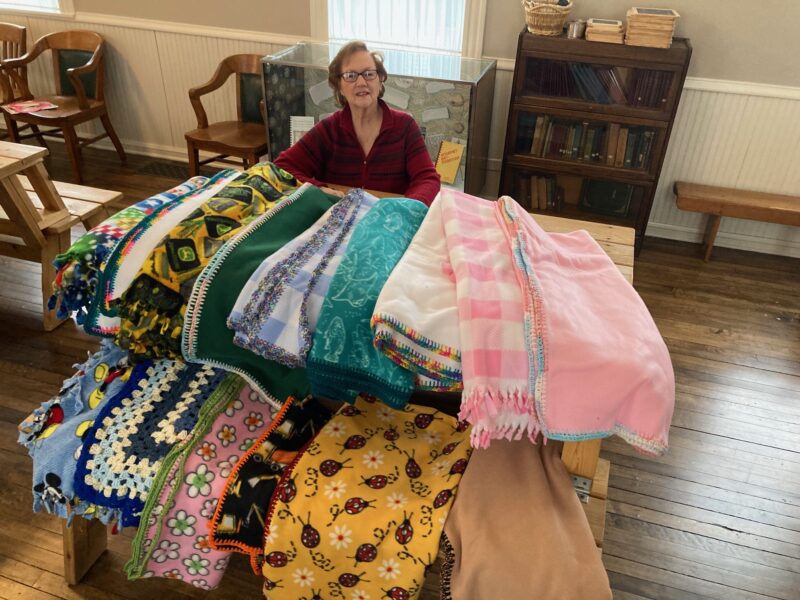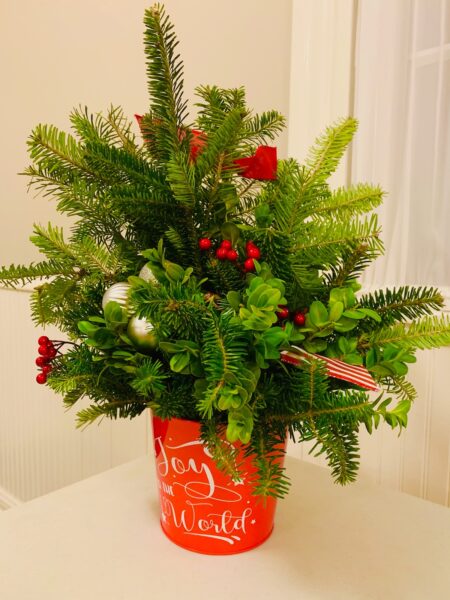Have you ever seen a beautiful, unique craft or piece of needlework and wondered how you could ever learn to make something like that?

For the past two years Mount Prospect Historical Society volunteers Martha Nelson and Nancy Corry have been teaching crafts from around the world once a month to enthusiastic adult students and have developed quite a following. In fact, they are now offering their classes both in the morning, from 10 a.m. to noon, and in the evening, from 7 to 9 p.m., on the second Wednesday of each month in Central School, 103 S. Maple St., Mount Prospect.
Participants have created fleece blankets for Project Linus, a non-profit organization that provides handmade blankets to children who are seriously ill, traumatized or otherwise in need; woven rugs, trivets and small baskets for themselves from old t-shirts; made coasters using the Japanese sashiko stitchery technique; and much more.
All experience levels are welcome to attend and try each month’s spotlight project for $10. Advance registration is recommended.
For instance, on Feb. 14 they will be learning to “Knit Like a Viking.” Trichinopoly or Viking knitting makes a filigree cord out of metal! Early examples of this ancient technique were found in 8th-century Scandinavian burial sites, and the design is still fashionable today. They will make a bracelet using simple tools and wire.
In March, the group will be making wool hook “mug rugs” (like coasters). In the 19th century, women used every bit of fabric to make something useful. They made quilts, rugs for the floor and hangings for the walls. Learn how to take recycled wool strips and make something useful!
Then, on April 10 they will be making a bookmark using a bargello pattern. Bargello is a type of needlepoint embroidery consisting of upright flat stitches laid in a mathematical pattern to create motifs. The name originates from a series of chairs found in the Bargello Palace in Florence that have a “flame stitch” pattern.
Traditionally, Bargello was stitched in wool on canvas. Embroidery done this way is remarkably durable. It is well suited for use on pillows, upholstery and even carpets, but not for clothing. In most traditional pieces, all stitches are vertical with stitches going over two or more threads. Traditional designs are very colorful, and use many hues of one color, which produces intricate shading effects. The patterns are naturally geometric.
Punch needle coasters, candlewicking, ribbon embroidery, quilling and Temari balls are also in the plans.
To peruse the craft offerings and register, visit www.mtphist.org/bessies-workbasket/. Registration is limited.





